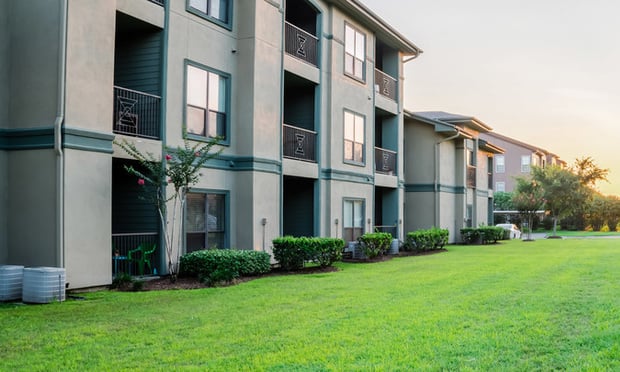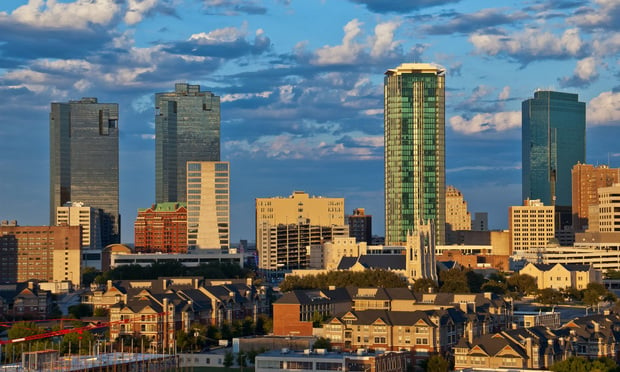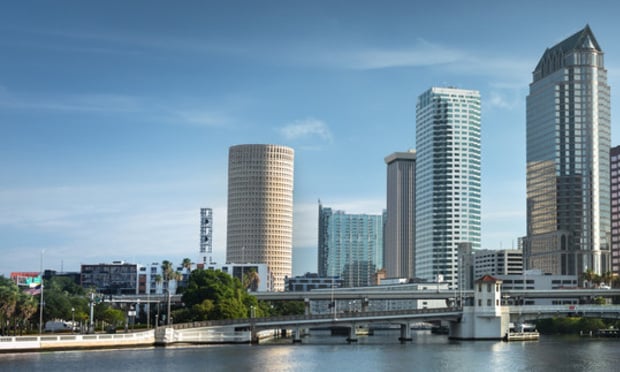Save for Denver, it's just keeping a steady pace with the past five years. In Denver, supply's barely keeping pace with demand. The overall occupancy has risen to 70.2% from 68.20% in 1999. The overall average room rate is $87.84 per night in comparison to last year's $84.76, says Jim Nelms, a Denver hotel broker with Coldwell Banker Commercial American Spectrum. He analyzes data supplied by the Rocky Mountain Lodging Report. Denver's overall revenue per room is up about 7% from a year ago, Nelms says.
"I'm pleasantly surprised," Nelms told GlobeSt.com. "The absorption rate is ahead of what I had projected." Demand is outpacing supply primarily because of all the new class-A and class-B hotels in the corridor. "They're the primary generators for hotel business," says Nelms.
Next year, hopefully, Denver will see the kick off of two major hotels - a 500-room, $115-million Westin at Denver International Airport and 1,100-room, $220-million Hyatt Regency in the CBD, positioned across from an expanded Colorado Convention Center."Certainly, the timing of both of them being built at about the same time is rather unusual," Nelms told GlobeSt.com, "but ... they're both needed assets for our lodging supply." Besides, he says, DIA can't really consider itself a world-class international airport without a hotel at the terminal.
Nelms says the new facilities will offer a healthy competition to established hotels. Impact will be short-term while the drawing card is extra meeting space. "But in the overall scheme of things, they will bring in new business," he says, predicting the impact will ease in about three years.
The Texas market can't match up to Denver, but it's holding steady and reflecting moderate growth, slightly higher room rates and occupancy that's on par with the past five years. Next year promises to bring more of the same, except for select markets like Houston's CBD.
Texas has just 10,070 more rooms this year than last, Doug Sutton, vice president of Source Strategies in San Antonio, told GlobeSt.com. That brings the state's third quarter total to 291,028 rooms, give or take a few "mom and pops" not being counted. Sutton's organization is one of the acknowledged sources for the Texas market.
Austin's hotel market is bearing the tightest occupancy, riding at 65.8% in comparison to a statewide average of 60.9%, says Sutton. Next is Houston at 63% followed by San Antonio's 62.4%. Ft. Worth has a 61.1% occupancy while Dallas trails with 60.7%. Statewide, occupancy has been hovering between 59% to 61% for the past couple of years, in line with a 20-year average of 60.4%. At the end of the third quarter, the statewide occupancy had totaled 59%, just a hair above the same period for the previous year.
Meanwhile, third quarter Revpar statewide has come in at $41.67 in comparison to $40.32 for 1999's third quarter. The average daily room rate statewide is $70.62 while it was $68.91 in 1999. "Basically, the rate's really been about the same for the past five years," Sutton says. "The trend we're seeing is that rates aren't necessarily going up."
What is occurring are expansions and rehabs of lower-rate, extended-stay properties - a swing that Sutton says will continue in 2001. Redos are outdoing new construction, he says, because lenders are being more cautious in what appears to be a slight market slowdown.
"We're not looking at it as a gloom and doom market," emphasizes Sutton. "We don't foresee anything as the bottom falling out ... We may not grow at breakneck pace, but we do look for growth." He says the current market is more the cause of development cycles and strongly cautions against building any more budget properties, given existing conditions.
William Forrest, president of Revac Inc., also keeps a wary eye on the hotel market, specifically Houston's. He says that city's limited-service hotel market literally has dried up due to over-supply. But, older, full-service establishments are seeing a rebirth as owners opt to rehab.
Houston's activity is in the CBD, thanks to this year's opening of Enron Field. The Four Seasons sale has brought in $250,000 per room and it's ticketed for a makeover. A $160-million to $170-million project is on the boards for the Ritz-Carlton. There are at least four more hotels on CBD drawing boards for 2001, says Forrest. Holtz Hotel, an extended-stay operation, is planning a 350-room facility, the Ritz-Carlton has 325 rooms, the Convention Center will add 800 rooms and just across the street from this trio is a lot that's rumored to be a site for a 200-room, three-star facility.
Forrest estimates the city has added 1,500 to 1,700 rooms this year and he expects that count to double by mid-year 2002. "It sounds like a lot, but it's not," he told GlobeSt.com, pointing out Houston's 2,500-room supply is 4,500 less than Austin's.
Want to continue reading?
Become a Free ALM Digital Reader.
Once you are an ALM Digital Member, you’ll receive:
- Breaking commercial real estate news and analysis, on-site and via our newsletters and custom alerts
- Educational webcasts, white papers, and ebooks from industry thought leaders
- Critical coverage of the property casualty insurance and financial advisory markets on our other ALM sites, PropertyCasualty360 and ThinkAdvisor
Already have an account? Sign In Now
*May exclude premium content© 2024 ALM Global, LLC, All Rights Reserved. Request academic re-use from www.copyright.com. All other uses, submit a request to [email protected]. For more information visit Asset & Logo Licensing.








